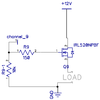MrDEB
Well-Known Member
I have Time_delay declared as a LONGWORD
[ICODE
//TURN ON THE RED LED STRIPS (100 ON TOP OF CAKE)
Red_Candle_STRIPS = 1 //turn on the red 100 on top of cake
time_delay = time_delay + 1
until
time_delay = 240000 // 4 miniutes
][/ICODE]
Not sure if this is a good method to have other code running until Time_delay = 240000
[ICODE
//TURN ON THE RED LED STRIPS (100 ON TOP OF CAKE)
Red_Candle_STRIPS = 1 //turn on the red 100 on top of cake
time_delay = time_delay + 1
until
time_delay = 240000 // 4 miniutes
][/ICODE]
Not sure if this is a good method to have other code running until Time_delay = 240000


